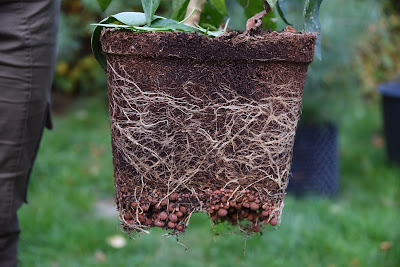In addition to bonsai I grow something else each year. Most years I grow a chilli or two and in addition this year I've grown garlic and radishes. I use the same soil, nutrients and pots for these projects to learn about them for growing bonsai.
These were Sante Fe Grande hot chillies. An attractive looking variety that are quite mild and can be used in large quantities for most cooking. You don't have to be careful of them like the Habaneros I grew last year.
Air pot roots - for bonsai this is perfect. After seeing this I am very pleased to have my pre bonsai trees growing in these pots as they are so suitable for bonsai. The three Scots pines are going to be fantastic growing like this.
Conventional pot roots. As usual the roots are doing laps of the pot.
The air pot plant was able to stand upright without a stake and was very stable - even with a large amount of fruit on it. The growth rate and yield were not discernibly different to a normal pot.
Conventional pots led to a plant that flopped all over and needed to be staked upright. Note the slanting trunk after I had cut off all the fruit.
I learned a bit more about how to grow in coco coir doing this as well. Garden centre top dressings for calcium and magnesium in combination with organic fertilisers are very hard to do and lead to severe nutrient lockout.







































